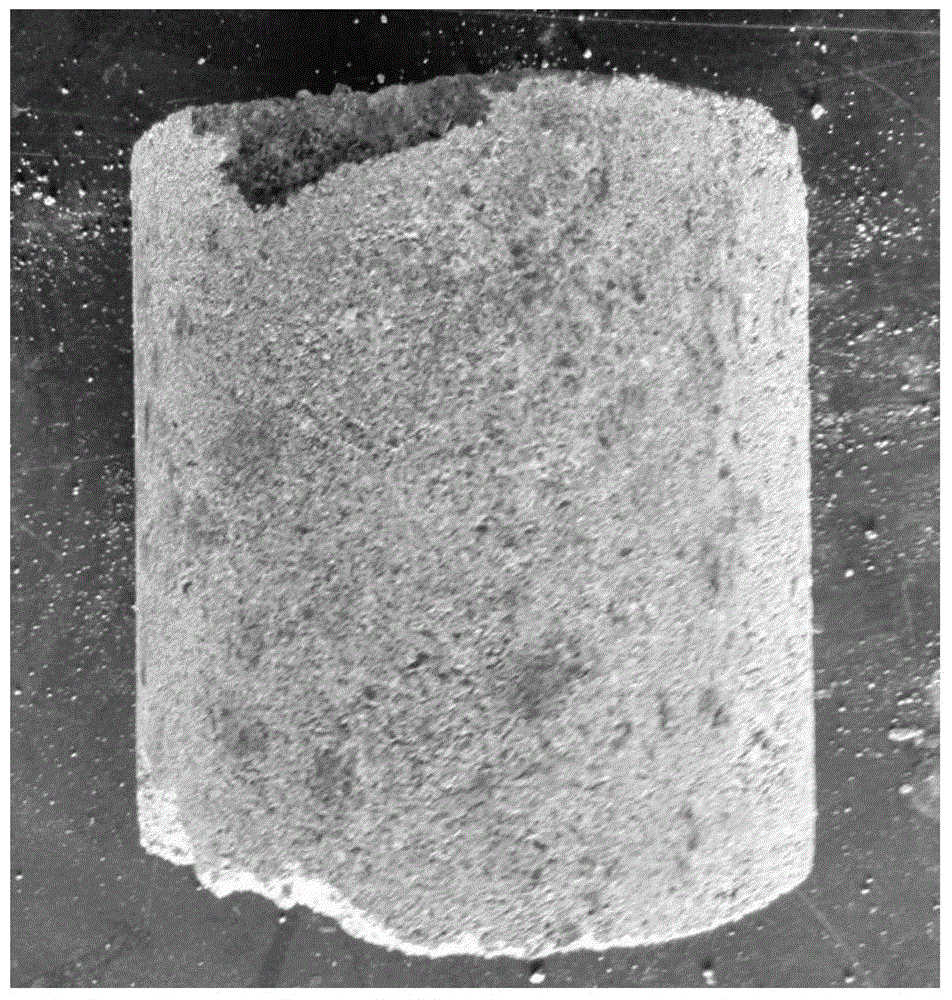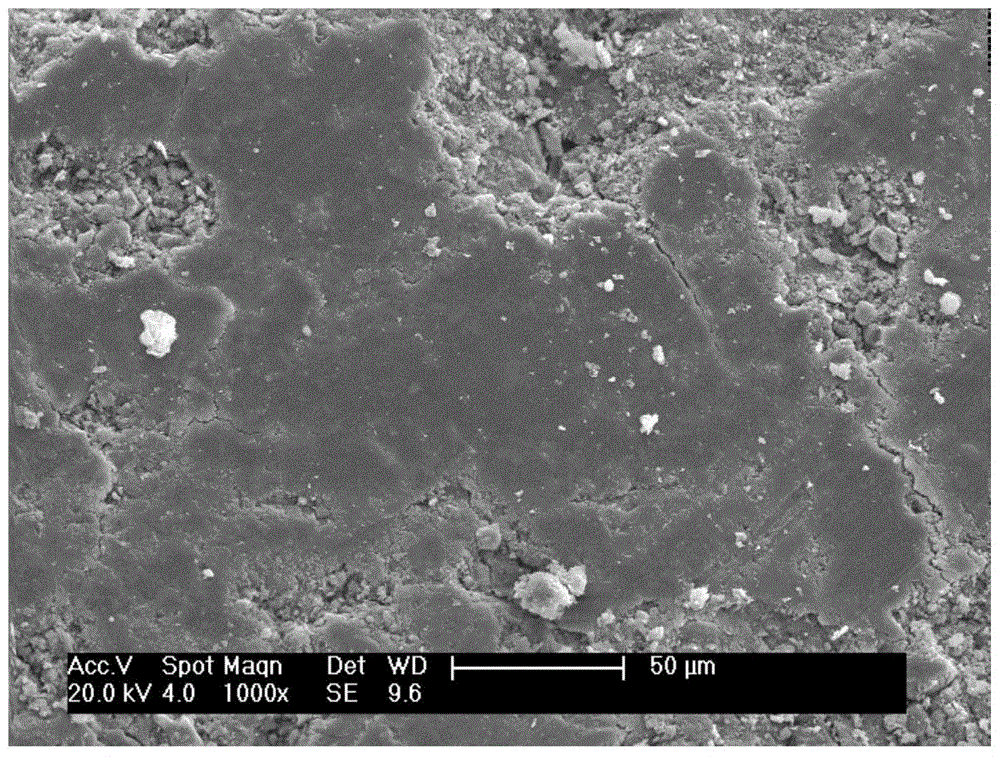A reagent for soil consolidation using carbonic anhydrase microorganisms and its application method
A carbonic anhydrase and microorganism technology, which is applied in the cross field of microorganisms and civil engineering materials, can solve the problems of slow growth of solidified soil strength, air pollution, poor resources, etc., and achieves significant energy saving and emission reduction benefits and reduces high emissions.
- Summary
- Abstract
- Description
- Claims
- Application Information
AI Technical Summary
Problems solved by technology
Method used
Image
Examples
Embodiment 1
[0025] (1) Weigh 12g of sucrose, Na 2 HPO 4 12H 2 O3g, MgSO 4 0.6g, CaCO 3 1.5g, KCl0.2g, (NH 4 ) 2 SO 4 Dissolve 0.6g and 0.4g of yeast extract in 1000mL deionized water, prepare the required medium solution, adjust the pH to 7, sterilize at 125°C for 25 minutes, take it out and wait for cooling, inoculate Bacillus colloidus to cooling culture In the base solution, shake culture at 30°C, the shaking frequency is 170r / min, and the culture time is 24h;
[0026] (2) Centrifuge the cultured bacterial liquid at high speed for 5 minutes, the centrifuge speed is 8000rpm, and the temperature is 4°C. Remove the nutrients in the upper medium, add 20mL of deionized water to make a concentrated bacterial liquid, and the bacterial cell concentration is 1×10 10 a / mL;
[0027] (3) Mix 1000g of dry soil, 20mL of highly concentrated colloidal bacillus bacteria solution, 200g of MgO, and 200g of water, stir well and fill it into a Φ10cm×15cm cylindrical test mold for compaction;
[00...
Embodiment 2
[0031] (1) Mix 1000g of dry soil, 200g of MgO, and 200g of water, stir well and fill it into a Φ10cm×15cm cylinder test mold for compaction;
[0032] (2) Inject CO with a volume concentration of 98% from the top of the test mold 2 Gas, the feeding rate is 5L / min, keep ventilation for 200min, and remove the mold.
[0033] The soil sample was solidified after 200 minutes of ventilation, and the compressive strength was 1.8MPa ( Figure 4 ), significantly lower than Example 1,; observed under the scanning electron microscope, the soil sample structure is relatively loose, and the cementation between particles is not obvious ( image 3 ).
Embodiment 3
[0035] (1) Weigh 9.6g of sucrose, Na 2 HPO 4 12H 2 O2.4g, MgSO 4 0.48g, CaCO 3 1.2g, KCl0.16g, (NH 4 ) 2 SO 4Dissolve 0.48g and 0.32g of yeast extract in 1000mL of deionized water, prepare the required medium solution, adjust the pH to 7, sterilize at 125°C for 25 minutes, take it out and wait for cooling, inoculate Bacillus colloidus to cooling culture In the base solution, shake culture at 30°C, the shaking frequency is 170r / min, and the culture time is 24h;
[0036] (2) Centrifuge the cultured bacterial liquid at high speed for 10 minutes, the speed of the centrifuge is 5000rpm, and the temperature is 4°C. Remove the nutrients in the upper medium, add 100mL of deionized water to make a concentrated bacterial liquid, and the concentration of the bacterial cells is 2×10 9 a / mL;
[0037] (3) Mix 1000g of dry soil, 100mL of high-concentration colloidal bacillus liquid, 100g of MgO, and 50g of water, stir well and fill it into a Φ10cm×15cm cylindrical test mold for compa...
PUM
| Property | Measurement | Unit |
|---|---|---|
| compressive strength | aaaaa | aaaaa |
| compressive strength | aaaaa | aaaaa |
| compressive strength | aaaaa | aaaaa |
Abstract
Description
Claims
Application Information
 Login to View More
Login to View More - R&D
- Intellectual Property
- Life Sciences
- Materials
- Tech Scout
- Unparalleled Data Quality
- Higher Quality Content
- 60% Fewer Hallucinations
Browse by: Latest US Patents, China's latest patents, Technical Efficacy Thesaurus, Application Domain, Technology Topic, Popular Technical Reports.
© 2025 PatSnap. All rights reserved.Legal|Privacy policy|Modern Slavery Act Transparency Statement|Sitemap|About US| Contact US: help@patsnap.com



